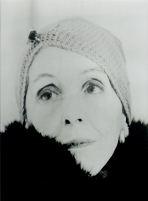 By Yoon Joung Lee A Danish author, Baroness Karen von Blixen-Finecke, was born in 1885 in Denmark, into a well- to-do patrician family. She was the daughter of writer and army officer, Wilhelm Domesem, and Ingeborg Westenholz. Her father’s adventurous life style and writing talents greatly influenced Blixen’s future. Also, Blixen spent her early years in the affluent environment on the family estate in Rungsted, Denmark, since her mother came from a wealthy family. From her young age, she showed her artistic talents. She studied at the Royal Academy of Art in Copenhagen, and also attended schools in England, Switzerland, Italy and France. In 1905. she started to publish several fictions and made her debut as a writer. In 1914, she married her second cousin, Baron Bror Blixen-Finecke. Although Blixen suffered from syphilis for their first year of marriage, it was eventually cured. The couple went to Kenya to establish a coffee plantation with her family’s money. However, their marriage did not last long because the two came from quite different educations and backgrounds, and most importantly, Bror Blixen were unfaithful to his wife. They eventually separated in 1921 and divorced in 1925. After the end of marriage and when the price of coffee was falling due to the Great Depression, Blixen sold the land to the local developer and came back to Denmark in 1931. After her return, she wrote her first book, Seven Gothic Tales, which was first published in the U.S. in 1934, under the pseudonym, Isak Dinesen. The book was later published in the UK and Denmark as well. This short story collection was judged as a masterpiece by critics in the United States and England, while the critics in Denmark considered her stories too exotic and not fitting in the period’s literary movement. However, whatever critics say about her story, her first book received great public recognition and made her a famous author across the world. Her second book, Out of Africa, was published in 1937 and brought great reputation as an writer. The book thought back to Kenya where she peacefully lived as a settler on a coffee plantation, as it presented a lyrical depiction of life such as deaths, friendships, drought, and disappointments. With this book, she was awarded the Tagea Brandt Rejselegat, a Danish’s prize for woman in the arts or academic life, in 1939. The book was also adapted into a Oscar-winning film, directed by Sydney Pollak, in 1985. In 1944 during World War II, she wrote a book, The Angelic Avengers, interpreted as an allegory of Nazism. She also published the most famous work of the 1940s and 1950s, Babette’s Feast, the story of a chief who spent her lottery prize to make a final and spectacular gourmet meal. She also wrote a book, called The Immoral Story, which was adapted to the movie screen in 1968 by American film director, Orson Welles. With many of her great tales, she was twice nominated for the Nobel Prize, but she failed to win the Prize. All her works were first published in English and later translated into Danish and many different languages. Critics point out that her English has unusual beauty and great skills. Blixen died in 1962 at her family’s estate, Rungstedlund, at the age of 77 by malnutrition. Her homes are now named the; Karen Blixen Museum near Nairobi and the Karen Blixen Museet in Denmark. Comments are closed.
|
Archives
July 2017
Categories
All
|
 RSS Feed
RSS Feed